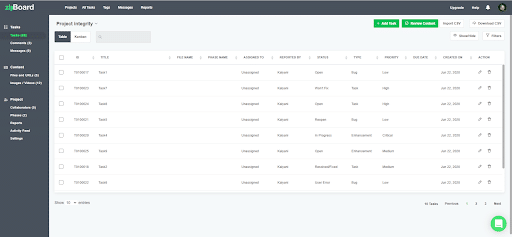Remote Work and Virtual Collaboration: Success Stories and Best Practices!
25 Jul

Table of Contents
TogglePeople have customized their working practices to match the changing environment, just the way water finds its way. This change has been considerably driven by the epidemic, which has forced us to choose remote work and virtual collaboration. The pandemic has forced the value of this adjustment, and it likewise offers long-term advantages, including boosted adaptability, a far better work-life balance, and accessibility to a larger talent pool.
According to research performed by Owl Labs, there has been a 24% boost in employees selecting remote work, with an extra 16% picking hybrid work.
This information makes it apparent that remote employment is still a prominent pattern.
However, it’s essential to remember that there are problems with virtual collaboration, which I will go over in the next section.
What are the challenges of remote work and virtual collaboration?
Remote work and virtual collaboration develop a mutually helpful scenario where employers receive high-quality work. At the same time, workers have the flexibility of working from home location. Nonetheless, it is essential to acknowledge the difficulties of virtual teams. Here are some key obstacles worth considering:
1. Communication
An efficient communication channel is vital for the success of any team, specifically remote ones, which usually experience this difficulty. Communication issues arise from poor connectivity, language barriers, time zone differences, or outdated devices.
However, for leaders without in-person contact, communicating and gathering information becomes difficult which results in decreased productivity. Furthermore, inadequate communication can trigger slow responses, resulting in task delays and hindered partnerships. Addressing these obstacles with improved channels and tools is crucial for cultivating effective synergy and boosting productivity in remote settings.
2. Collaboration
Collaboration within groups comes to be fairly difficult, as employees need to gather in one place to have face-to-face meetings to discuss tasks, future goals or to construct social relationships. Additionally, the absence of physical presence might hinder spontaneous suggestion sharing, which could bring about a feeling of isolation among employees.
3. Productivity
Maintaining high productivity for remote teams takes a lot of work. The possible causes for this can be the distraction in the house, lack of an organized atmosphere, and absence of senior supervision. In addition, some employees may likewise require assistance handling their time so they deliver work on time while maintaining quality. So, leaders have to establish expectations and assistance to help team members.
4. Technology
Having dependable technology infrastructure is necessary for employees working remotely to work effortlessly. Technical concerns, such as poor internet and software program problems, can interrupt interaction and collaboration.
Also, poor equipment and outdated tools can create confusion and stress among staff members. For companies onboarding remote talent across borders, knowing how to ship laptop internationally is also crucial for avoiding delays and ensuring new hires are set up smoothly.
5. Work-Life Balance
One of the greatest disadvantages of remote work is the uncertain boundaries of an employee’s professional and individual life. Frequently, team members encounter challenges in disconnecting from work, given that their homes have transformed into workplaces. As a result, this can cause burnout and decrease the job satisfaction of an employee.
Additionally, certain individuals may face difficulties in effectively separating personal distractions during working hours, thereby negatively impacting their overall productivity.
Now that you know these challenges, I have discussed three inspiring success stories of companies that have excelled in remote work and virtual collaboration.
Best 3 success stories of remote work and virtual collaboration
Let’s begin by exploring companies that excelled in embracing remote work.
1. GitLab
GitLab, a global all-remote company, operates without physical offices and boasts over 1,500 team members across 65+ countries. Their fully remote setup allows for a diverse and distributed workforce, enabling collaboration and innovation on a global scale.
2. Dropbox
Another company that has successfully transformed its work culture is Dropbox. In this organization, employees can work remotely and adopt an asynchronous work style. The company also has implemented a return-to-office strategy focusing on virtual collaboration, flexible work hours, and creating Dropbox Studios for in-person meetings and team events.
3. Automattic
Automattic with over 500 remote professionals in nearly 50 countries has taken the route of remote work as a crucial part of its business model since its inception. The company’s success lies in its ability to find talent globally and offers flexible work hours, allowing team members to thrive in their preferred environments and schedules.
Best practices to enhance remote team collaboration
1. Clarify expectations and objectives
Distributing the roles, responsibilities, and project goals is crucial in remote team settings. As confusion can arise easily with the absence of direct face-to-face interaction. Therefore, you need to create a solid foundation by providing a detailed project brief, explaining individual tasks, and setting realistic expectations. Moreover, you can revisit and reinforce these objectives and expectations to ensure everyone is on the same page throughout the project lifecycle.
2. Select appropriate tools
Choose suitable remote work and collaboration tools that align with your team’s requirements, such as:
- zipBoard: A visual review and approval tool that helps teams collaborate on digital assets including documents, websites and web apps, images, videos, and zip files. zipBoard allows internal teams to easily collect feedback from external stakeholders.

- ProofHub: All-in-one project management and team collaboration tool that centralizes communication, manages tasks, tracks progress, and shares files.

- Slack: A real-time messaging platform that enables seamless team collaboration, instant messaging, file sharing, and integration.

3. Foster regular communication
In a remote job setup, communication is important. For that reason, you must develop a system where your team members can frequently communicate to enhance collaboration. Furthermore, you can encourage your group to interact via messaging applications or digital meeting tools where they can chat casually and exchange views on the job roles.
Regular communication ensures that every person understands the task’s responsibilities and develops a feeling of belonging among team members.
4. Embrace flexibility
Remote work requires employees to balance their professional and personal lives, especially when working from a different time zone. So, embracing flexibility means understanding that everyone cannot follow the usual 9 to 5 schedule and being open to diverse work arrangements.
Flexibility means being able to adapt easily when things do not go as planned at work. It will happen time and again because we know that when teams work together remotely, unexpected challenges can pop up. So, if you encourage flexibility, it means the team can still have a good balance between work and personal life, even when things get unpredictable. And that helps the team stay strong and do well no matter what comes their way.
5. Cultivate relationships
Building partnerships are necessary for remote work to produce a positive work culture and a favorable environment. Working remotely creates isolation, so a leader like you should proactively foster relations among team members. You can accomplish this by urging group activities, such as online collaboration events or ice breakers sessions, so they get to know each other better.
Moreover, you can also conduct meetings to check in on the team members personally, enabling a casual conversation and sharing personal experiences outside occupational topics.
So, when employees develop good partnerships with each other in a team, it creates faith, understanding, and a feeling of a relationship. Consequently, this can make the team work better and solve problems effectively.
Conclusion
Despite the difficulties, embracing remote work and collaboration can help you achieve exceptional results. You can optimize results and deftly manage complications by putting the best practices described in this guide into practice. These techniques not only increase productivity but also encourage achievement for people and businesses who engage in remote work and virtual collaboration.
Author Bio:
Nandini Sharma is the marketing manager at ProofHub, counted amongst the best Asana alternatives. She is always delighted to talk about SaaS, project management, marketing expertise, and teamwork. Her major interests are reading about new trends in work management and doing arts and crafts. Her artistic nature also shows in her progressive approach.
Related Post
Recent Posts
- How Laerdal Medical Cut eLearning Review Time by 50% with zipBoard’s Visual Review Tool July 9, 2025
- Why Your Team Needs a Content Feedback System (Not Just Comments in Docs) May 28, 2025
- Content Approvals Are Slowing You Down — Here’s the Fix May 26, 2025
- How to Streamline Content Review and Approval — Best Practices, Tools & Automation May 12, 2025
- What Is Content Operations? And Why It Breaks Without a Feedback & Approval System May 3, 2025
©️ Copyright 2023 zipBoard Tech. All rights reserved.


